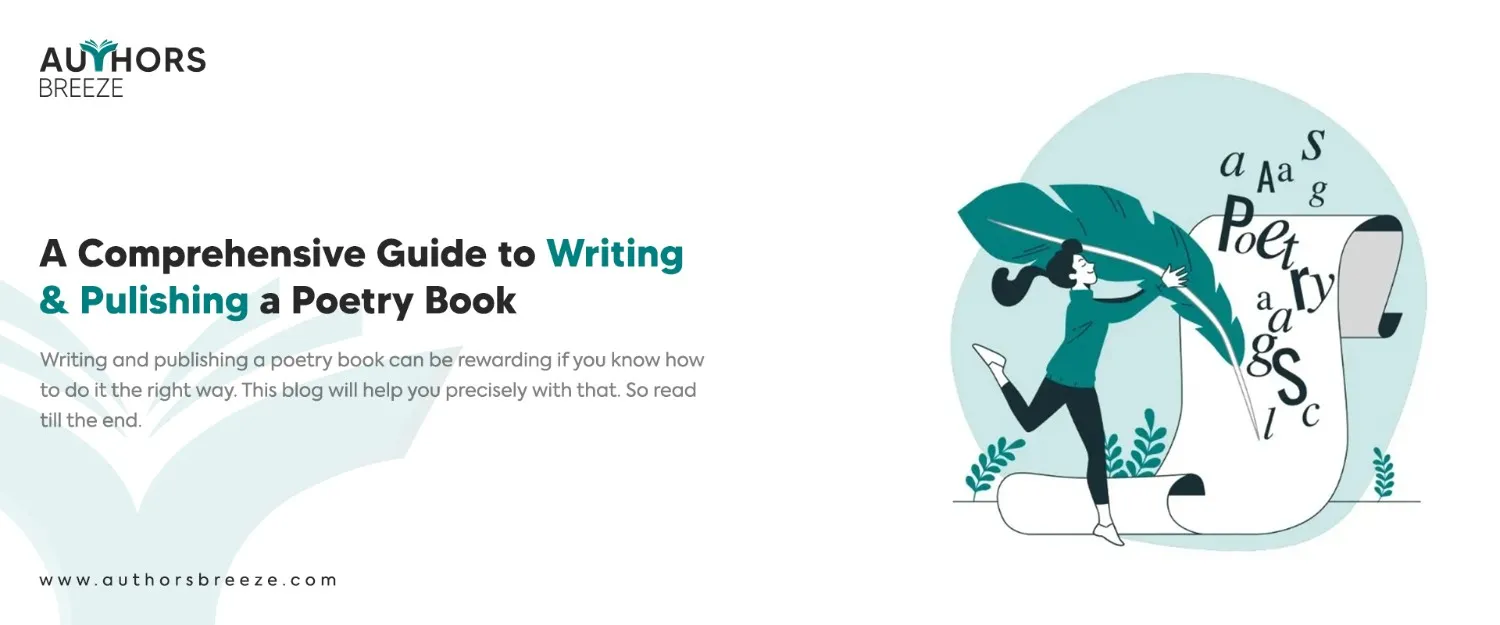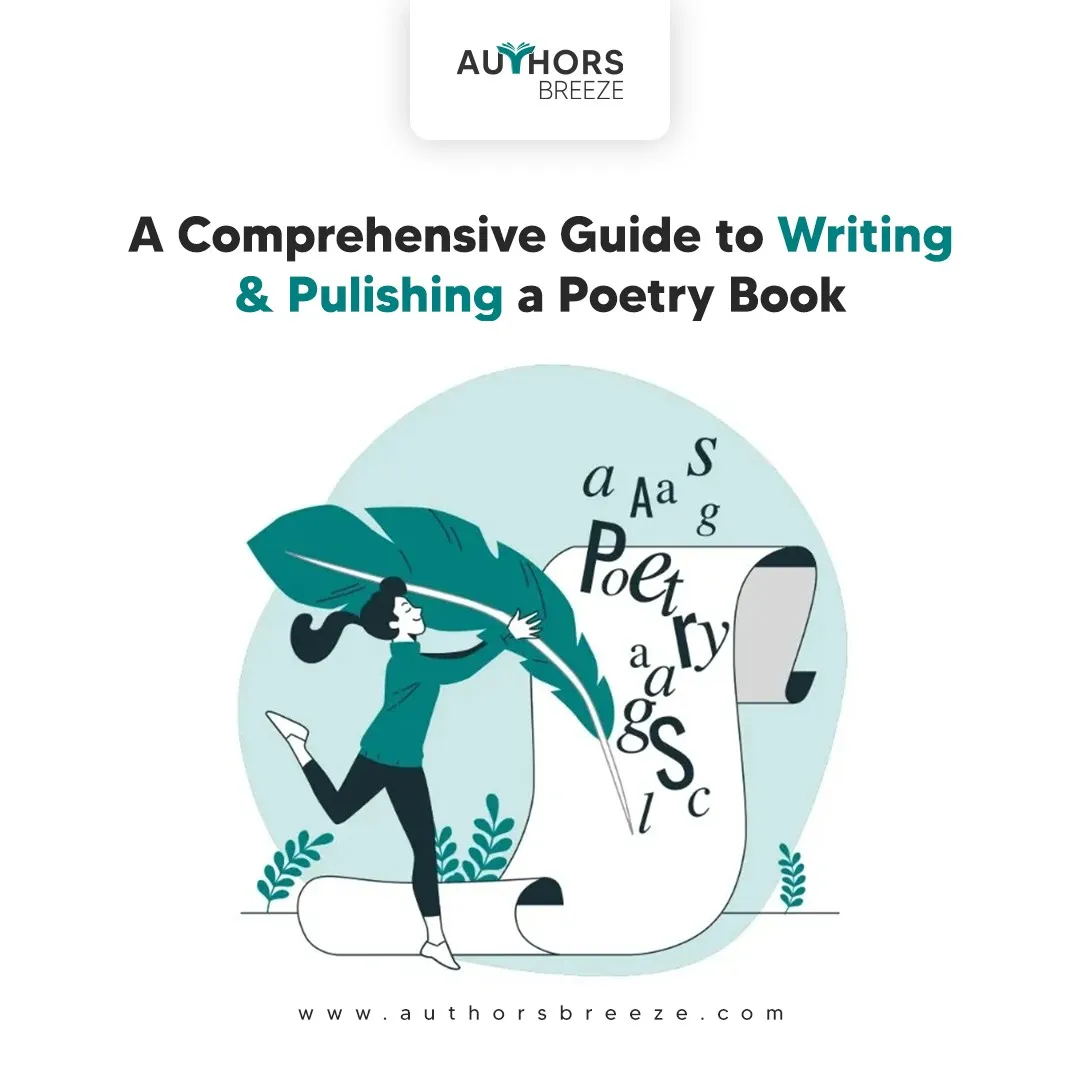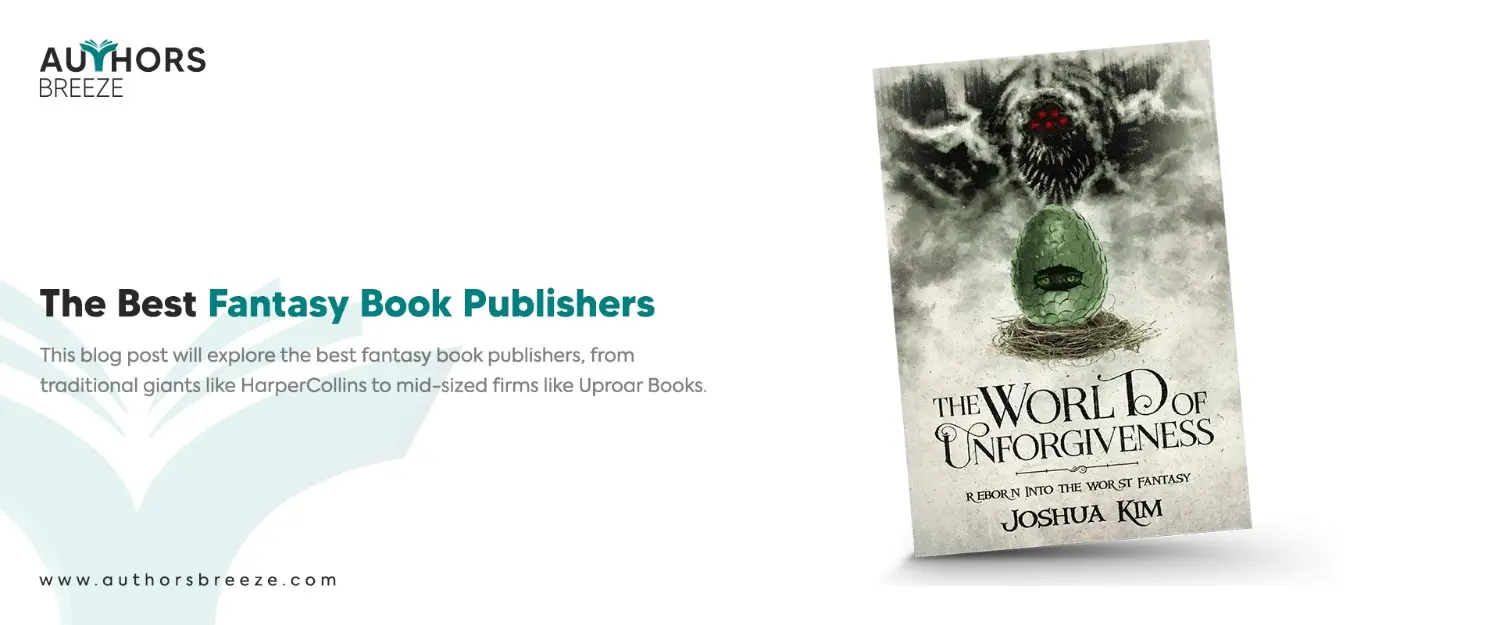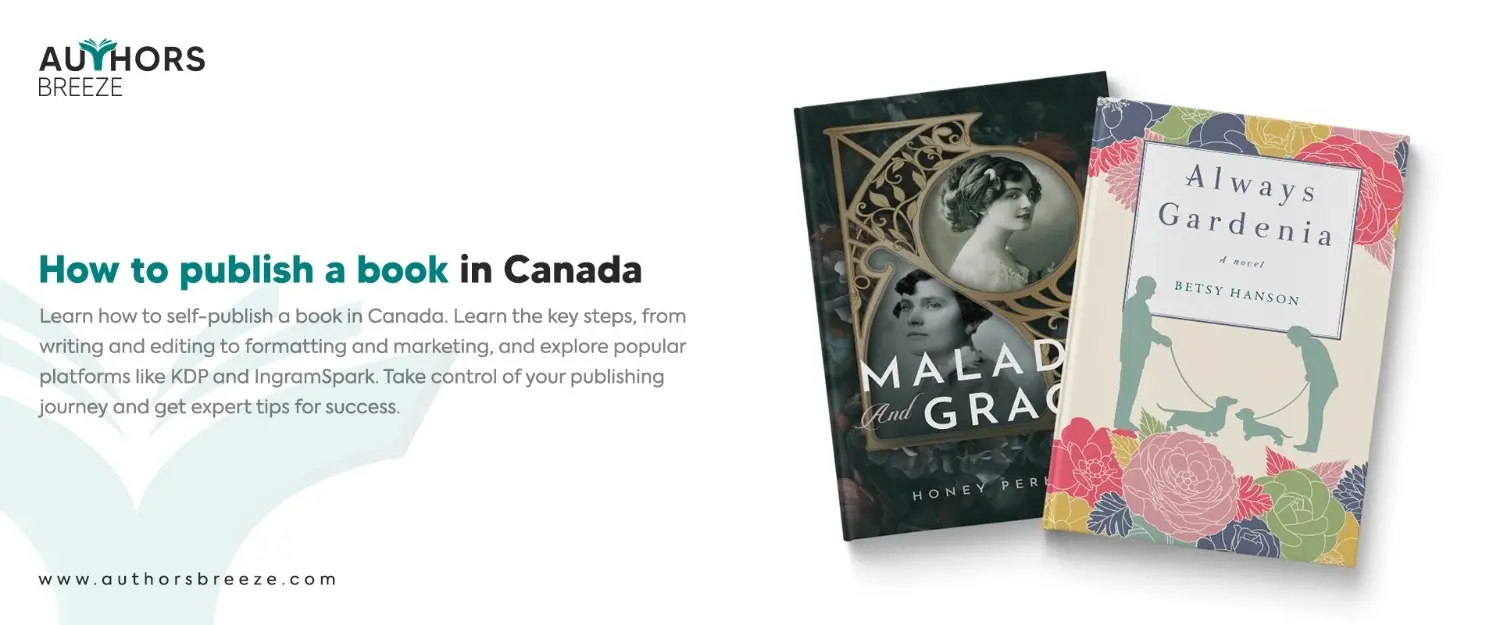Don’t Have Time to Read? Listen to this Article Instead!
Key Takeaways: Writing and Publishing a Poetry Book
Writing and publishing a poetry book is both an artistic and strategic process, and this blog will help you learn it using a simple step-by-step approach. So, don’t wait—start reading now!
- Establish a central theme for your poetry book.
- Then, select your best poems.
- Experiment with styles and forms to enhance creativity and diversity in your writing.
- Dedicate time to consistent writing and refining your craft.
- Edit your writing thoroughly in order to polish your manuscript.
- Design an engaging book cover as well as layout to captivate readers.
- Publish your book by choosing the best publishing option.
- Promote your poetry book using social media, readings, and targeted ad campaigns.
- Connect with your readers and build a community around your poetry.
Beautiful Verses, Exceptionally Published
Want to self-publish your poetry collection? Get your words into the world and open new channels not only for profit.
Introduction
Poetry is a timeless art that lets writers express their deepest emotions and unique perspectives on the world. That is why poetry books have always held a special place in literature, with countless famous poets, such as William Wordsworth, Maya Angelou, John Keats, etc.
However, writing a poetry book sounds all pretty and fun, but
Wait a minute!
It is one of the challenging things to do in the field of literature.
Thus, if you still think you can express yourself through poetry, you must write and publish one.
Now that you are planning on writing and publishing a book of poems, you must remember that publishing a poetry book combines traditional literary beauty with modern strategies to reach a global audience. And that is a complex task.
But we are here to turn that complexity into simplicity. We have covered everything from finding your inspiration to marketing your finished work. This blog post will guide you to learn the basic and essential steps of writing and publishing a poetry book.
So, let’s start!
Easy Steps for Writing and Publishing a Poetry Book
Prepare and Plan Your Poetry Book
Before starting to write your poetry book, you should prepare and plan. With the help of an organized approach, you will write a book that truly speaks to its readers.
So, let’s take a look at what to do before you start writing.
Find Your Inspiration
Every poet has a unique voice and inspiration. Whether it’s nature, relationships, societal issues, or some kind of personal introspection. Therefore, in order to write a compelling poetry book, you must discover what inspires you. Moreover, you can ask yourself the following:
- What emotions do you want to convey?
- Which topics do you want to cover?
- What experiences do you want to explore in your writing?
Create A Theme Or Concept
A cohesive poetry book often revolves around a central theme. Therefore, you must select a definite and unified concept. It helps to tie your poems together effortlessly.
Some of the most commonly used poetic themes are;
- Love
- Loss
- Hope
- Personal identity
Plan Your Book
Once you have determined the inspiration and theme, start planning the structure of your poetry book. When doing so, you must consider the following:
- What poems do you want to include?
- How many poems do you want to add?
- How will they be organized within the book?
Experiment With Styles And Forms
Explore different styles and forms to diversify your collection. For example, you can experiment with forms like,
- Free verse
- Haikus
- Sonnets
- Contemporary
However, you must choose what suits you best because modern poetry celebrates creativity.
Establish A Writing Routine
Consistency is key. Therefore, commit a specific time of the day or week to writing. This strategy will help you remain on track and also polish your poetic skills.
Curate Your Collection
After you have figured out what type of poetry you are going to write and publish, start gathering your poetries together.
Select Your Best Work.
Your poetry book doesn’t need to include every poem you’ve written. Only select the ones that resonate most with your chosen theme and showcase your strongest writing skills.
Write New Poems To Include
While selecting your poems, you may notice some missing themes or topics. Fill these gaps by writing new poems that match your theme and style. Keep a consistent writing style in mind.
Organize Your Book
Plan the order of your poems to create a cohesive flow. You can organize it in a chronological manner or on the basis of theme and emotional highs and lows. An organized collection will help to create an emotional journey for your readers.
Edit Your Manuscript
Now that you have a draft of your poetry book, it’s time to edit and revise. The editing process is done in two steps;
Self-Edit
First, edit and revise your work yourself. Read your poems aloud to catch awkward phrasing or rhythm issues. Also, look out for
- Typos
- Grammatical errors
- Inconsistency in tone and style
Also Read: “What Are the Different Types of Editing?”
Get Professional Help
After self-editing, you can seek professional help, such as proofreading services from Authors Breeze, to refine and polish your work. Also, look for feedback from Beta readers to improve your manuscript.
Professional Editing, Flawless Book
Enhance your book’s impact with expert editing. Our skilled editors refine clarity, maintain consistency, and deliver a polished final manuscript.
Design Your Poetry Book
Once your manuscript is all refined and polished, it’s time to design it. This includes the following:
- Creating a compelling book cover
- Selecting the proper interior layout
Craft A Captivating Book Cover
Your book cover design is the first thing readers see. Therefore, design your book cover to match your readers’ interests, age, and what they expect from the genre. You can hire professional book cover design services to help you create one that should be unique and fascinating enough to catch readers’ attention.
Use The Right Layout.
When writing a poetry book, layout matters a lot. Take a detailed look at line breaks, spacing, and fonts used because they all impact the reader’s experience.
Key Tip:
“Use illustrations related to the theme of your book to enhance its emotional impact.”
Publish Your Book
Completely edited and designed final draft of your book? It is time to publish it. However, there are multiple things to consider when doing so. They are as follows:
Format Your Book
Decide in which format you want your book. Some formatting styles include the following:
- Paperback
- Hardcover
- Ebook
- Audiobook
Formatting is not your cup of tea? Then, you must hire expert book formatting services to make your book in your desired format.
Also Read: “Optimizing Your Manuscript: What is Book Formatting and Why it Matters”
Choose Publishing Option
Done formatting your book? So, now choose how you want to publish your book. There are a variety of publishing options available for poets. For example:
- Traditional Publishing
- Self-Publishing
Each option has its advantages and disadvantages. Hence, research thoroughly and select the one that fits best with your goals and budget.
If you want to become a self-published poetry author but don’t know how? Then, read our blog for guidance:
“How To Self-Publish Your Own Book in 8 Steps – Easiest Guide”
Set Your Price
When you have got your book published, set a market-competitive price for it. Research prices of similar poetry books and set your price accordingly.
Key Tip:
“Offer promotional discounts for the launch to increase your sales and readership.”
Promote Your Poetry Book
Once your book is published, it’s time to promote it. Use the following strategies to influence and reach a wide range of audiences.
Build Your Online Presence
Build a solid online presence and establish yourself as an authority in your genre. It helps showcase your writing and gives readers insights into your creative process. It may involve creating;
- Authors website
- Blog
- Social media handles, etc.
Also Read: “How to Create an Author Website Design: A Complete Guide”
Connect With Readers
Once your book is available for purchase, it’s essential to connect and get along with your readers. It may involve;
- Reaching out to readers on social media
- Responding to reviews or comments
- Sharing your poetry at open mic nights, book clubs
Seek Reviews And Feedback
As you continue to write and publish, seek feedback on your work and look for ways to improve. Send free copies to influencers, bloggers, or early readers to gather reviews. Positive feedback can boost your book’s credibility.
Run Targeted Ad Campaigns
Utilize platforms like Facebook Ads or Amazon Advertising to target poetry fans and drive your book sales.
Also Read: Behind the Bestsellers: Best Book Marketing Campaigns
How Many Poems in a Poetry Book?
The number of poems in a poetry book depends on the type of book. A full-length poetry book usually has 50 to 100 poems. At the same time, a poetry chapbook (a shorter collection) has 15 to 40 poems. Some books may have more or fewer. It depends on the author’s choice and the publisher’s guidelines.
What is a Poetry Chapbook?
A poetry chapbook is a small collection of poems, usually 15 to 40 pages long. It is often self-published or printed in small batches. Chapbooks are great for new poets to share their work without publishing a full-length book.
Additional Tips for Writing and Publishing a Poetry Book
Consider these additional tips to make each step a bit easier.
- Always set goals and a proper timeline to remain on track and finish your book.
- There is no need to rush things. Work at your own pace because your book needs your attention in order to be a catchy and inspiring one.
- Don’t try to do everything by yourself, or you might end up creating a mess. Seek help from experts for the tasks that you can’t perform or are not good at.
- Join poetry communities and attend workshops to connect with other writers to remain inspired and informed.
- Never stop writing. Always try to improve your craft and write new poems while exploring different themes.
Also Read: “Reaching Readers: Expert Insights on How to Promote a Book”
Conclusion
Publishing a poetry book is both an art and a strategic effort. Nevertheless, it’s a challenging yet equally rewarding journey that combines the beauty of timeless literary traditions with the strategies presented by modern tools and platforms.
Remember that the significance of success in the world of poetry is determination, hard work, and commitment to your craft. Therefore, with the help of a clear, structured plan and the support of professional services like Authors Breeze, you can bring your poetry book to life.
So go ahead! Write, publish, and convey your ideas because the world is waiting to hear you.
Frequently Asked Question
How do I become a self-published poetry author?
To self-publish your poetry, start by finalizing your manuscript, editing it carefully, and formatting it for print or digital platforms. Then, design a cover, choose a publishing platform like Amazon KDP or IngramSpark, and market your book to reach readers.
Should I publish a chapbook or a full-length poetry collection?
A chapbook (typically 20–40 poems) is a great way to introduce your work to readers with a smaller, more affordable book. A full-length poetry collection (50+ poems) provides a more in-depth experience and can establish you as a serious poet. Choose based on your goals and the number of quality poems you have.
How do you order the poems when writing a poetry book?
Think about a theme or story arc for your collection. Arrange the poems in a way that creates a natural flow—by emotion, subject, or chronology. Reading them aloud can help you determine the best order.
I've finished writing a poetry book. How do I publish it?
First, format your book professionally and create an eye-catching cover. Then, choose a self-publishing platform like Amazon KDP, Draft2Digital, or IngramSpark. Upload your book, set a price, and promote it through social media, book readings, and poetry communities.
Do I need an agent to publish my poetry book?
No, you don’t need an agent to self-publish. You can handle everything yourself or hire freelancers for editing, cover design, and marketing. However, if you aim for traditional publishing, an agent can help get your work noticed by publishers.
Professional Writing, Affordable Prices
Your budget shouldn’t limit your dreams. Our cost-effective book ghostwriting solutions help you write and share your story with readers everywhere.







